Container gardening ideas – 12 display and planting tips
Use container gardening ideas to add beautiful highlights to all areas of your garden, adding rich textures, bright colors and fresh display ideas to your plot
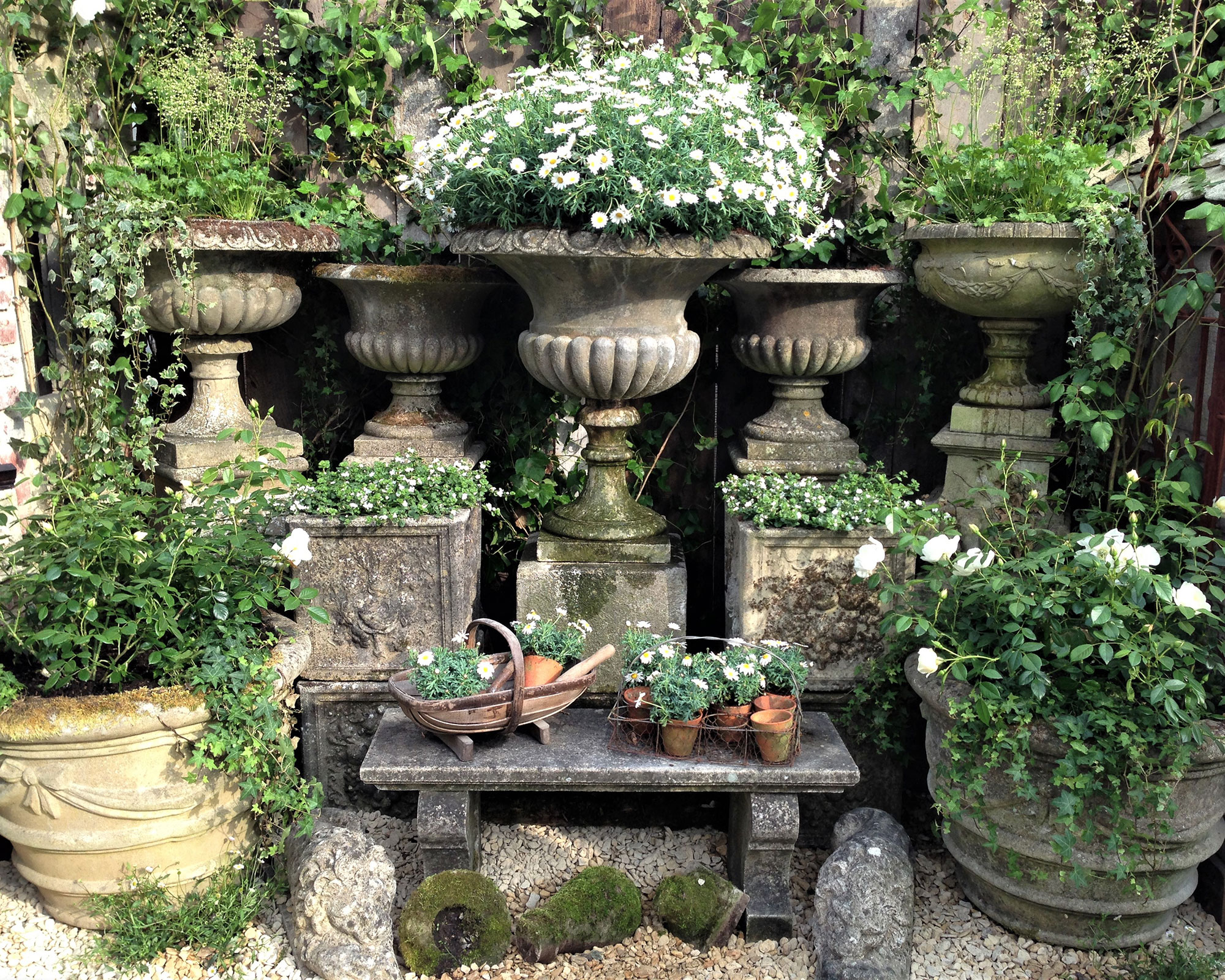
Container gardening ideas are the perfect way to make small but powerful changes to your garden.
Planted containers can add instant and easy color to your backyard, to a bare corner, a balcony or a patio, so factor them in to your garden ideas as an important element to include.
Each pot can showcase a single type of plant for a dramatic effect, or a mix of plants to create a seasonal display or longer lasting focal point. You can grow pretty much anything in a planter with the right compost and feeding regime, and that means you can grow plants with vastly different growing needs, such as those that prefer acidic soil or have special feeding requirements.
Container planting is also a solution as a small garden idea, introducing growing opportunities on patios or terraces.
Container gardening ideas – for year round displays
While the type of container or planter box can be ornamental and add depth and elegance to the style of your garden, the stars of the show are usually the plants.
A patio planter can be awash with color and interest right through the summer months planted with a heady mix of flowering annuals and perennials chosen for their flower prowess and the way that they grow, either reaching for the sun, or tumbling over the edges, softening the effect.
But there are also many fall planter ideas to showcase the best fall flowers for pots – these will carry the interest on through the year. See our guide also on how to plant a winter container.
There is no set recipe, and while there are some best plants for pots all year round, the world of plants is at your disposal, so indulge your inner flower power and plant for drama, scent and vibrancy.
1. Display a collection of pots and planters
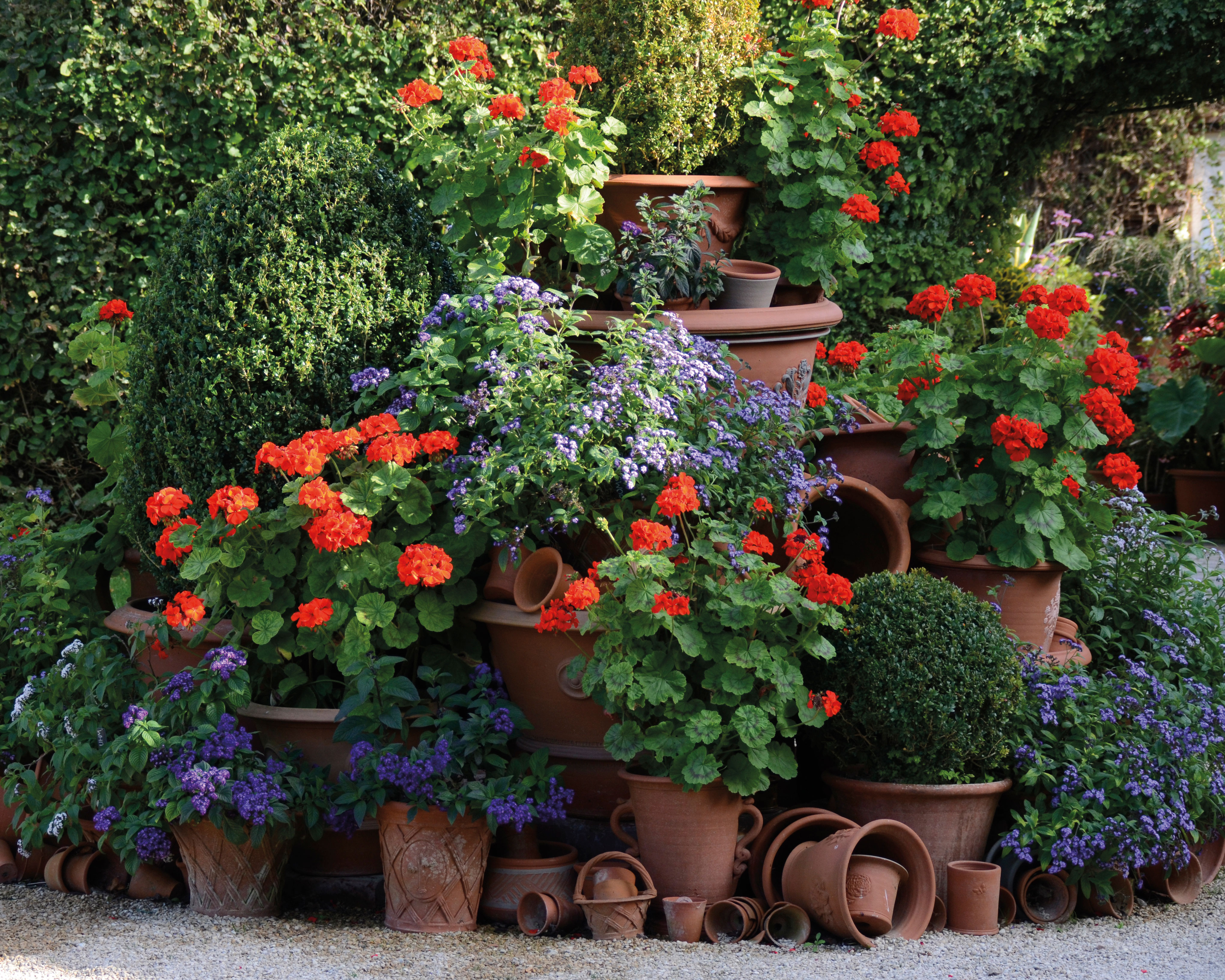
Most gardeners have an eclectic mix of pots and planters around their garden. For the best effect with container garden ideas, group similar materials and colors of planters together, and arrange in different heights and sizes to create a tiered effect.
If you are buying new containers then think about blending the colors with your home's brick or stonework, the local stone, or your garden color scheme. It helps tie everything together and gives a more established feel to the overall design.
Terracotta is an earthy choice for many gardens. If you are starting out choose planters that you love that you can add to over your gardening journey.
'The great advantage of container planting is that arrangements can be changed or added to, according to a whim, depending on what is looking good, or the season. New pots or plants can find a home among old favourites,' explains Jim Keeling of Whichford Pottery.
2. Include mixed planting in a large container
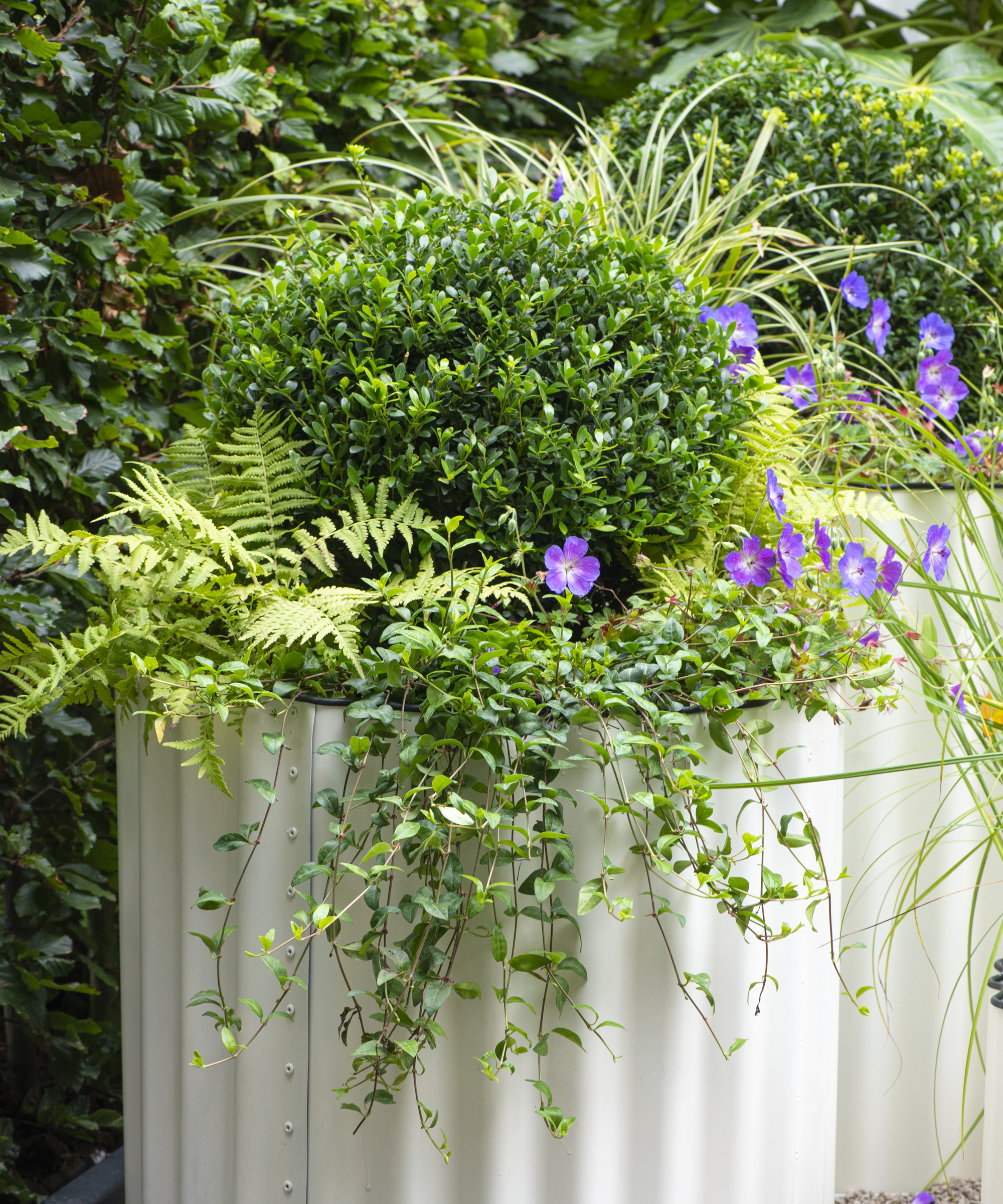
Choose a careful combination of plants to create a beautifully balanced display in a large container.
'In any complex planting, be it large or small, we follow the same principles. We divide the choice of plants into three categories to establish the form and structure of the planting,' explains Jim Keeling of Whichford Pottery.
'First, we choose the centerpiece, which must, above all, have height. Then we surround this with a “midriff” of upright plants of medium height. Finally, we choose low-growing or trailing plants to go against the rim, fitting in below the midriff. In this way, we construct a pyramid of plants. These principles need to be adapted according to the proposed position of the pot; for instance, if we are designing for a spot against a wall, the centrepiece will be put at the back to start with, rather than in the middle,' he continues.
3. Use shelving or steps for a tiered display
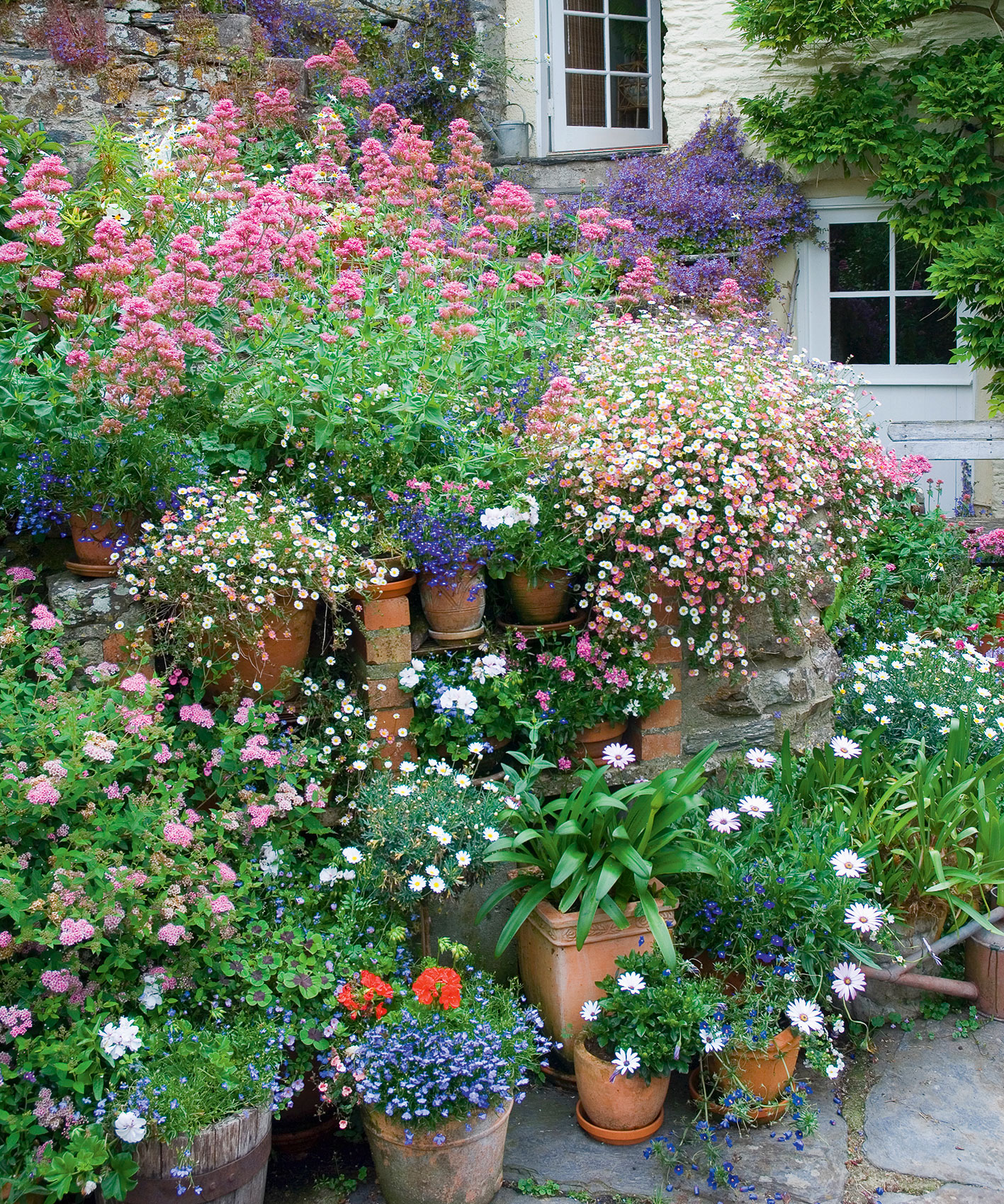
If you have some steps, a wall, or garden shelving, make them into stunning features with clever use of pots and containers.
You can choose a set of the same size and type of pot to display your collection of plants. This is an age-old trick that has evolved from the auricular theatres of the Victorian days, but still looks good today.
You don’t need to spend a fortune: a redundant ladder makes a great tiered display unit. Move the pots around to keep those that are looking their best at eye level.
4. Approach container gardening like interior design
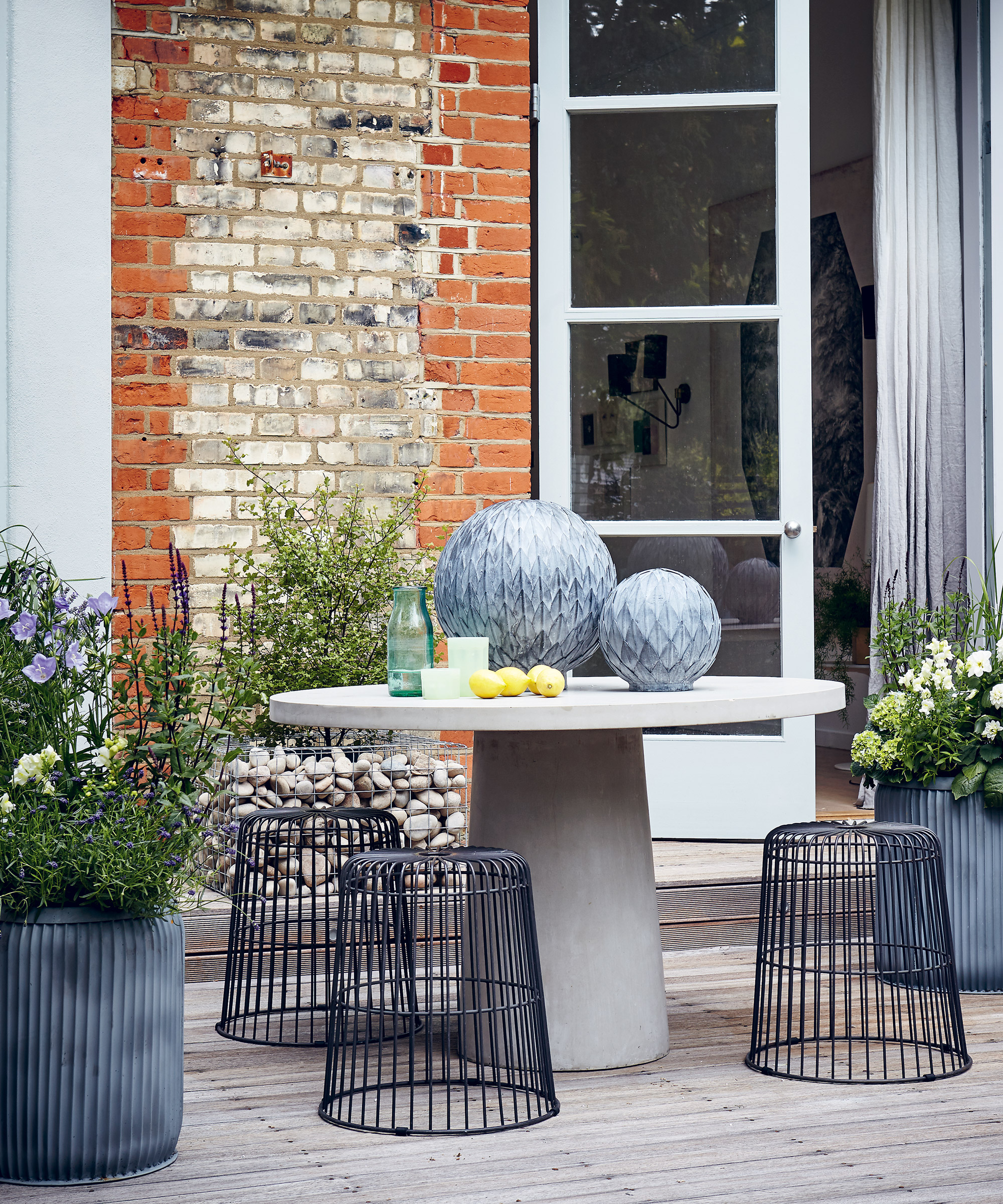
Specializing in small-space gardening and author of Modern Container Gardening, Isabelle Palmer of The Balcony Gardener is perfectly positioned to transform small outdoor areas into ‘the fifth room’.
Pots, planters and containers of every size and shape make up the bulk of her garden, one that adapts, changes and is forever evolving.
'I approach designing small garden areas and balcony garden ideas as I would do any other room in the house. There might be a beautiful painting on the wall of a room leading to the outdoor area that will inform the color choices of the plants,' Isabelle explains.
'I think of the garden as the fifth room and make the design fit the aesthetic. The finished space should elongate the home, so interior design is as important as garden design when it comes to small gardens and balconies,' she adds.
5. Plant containers with low maintenance succulents
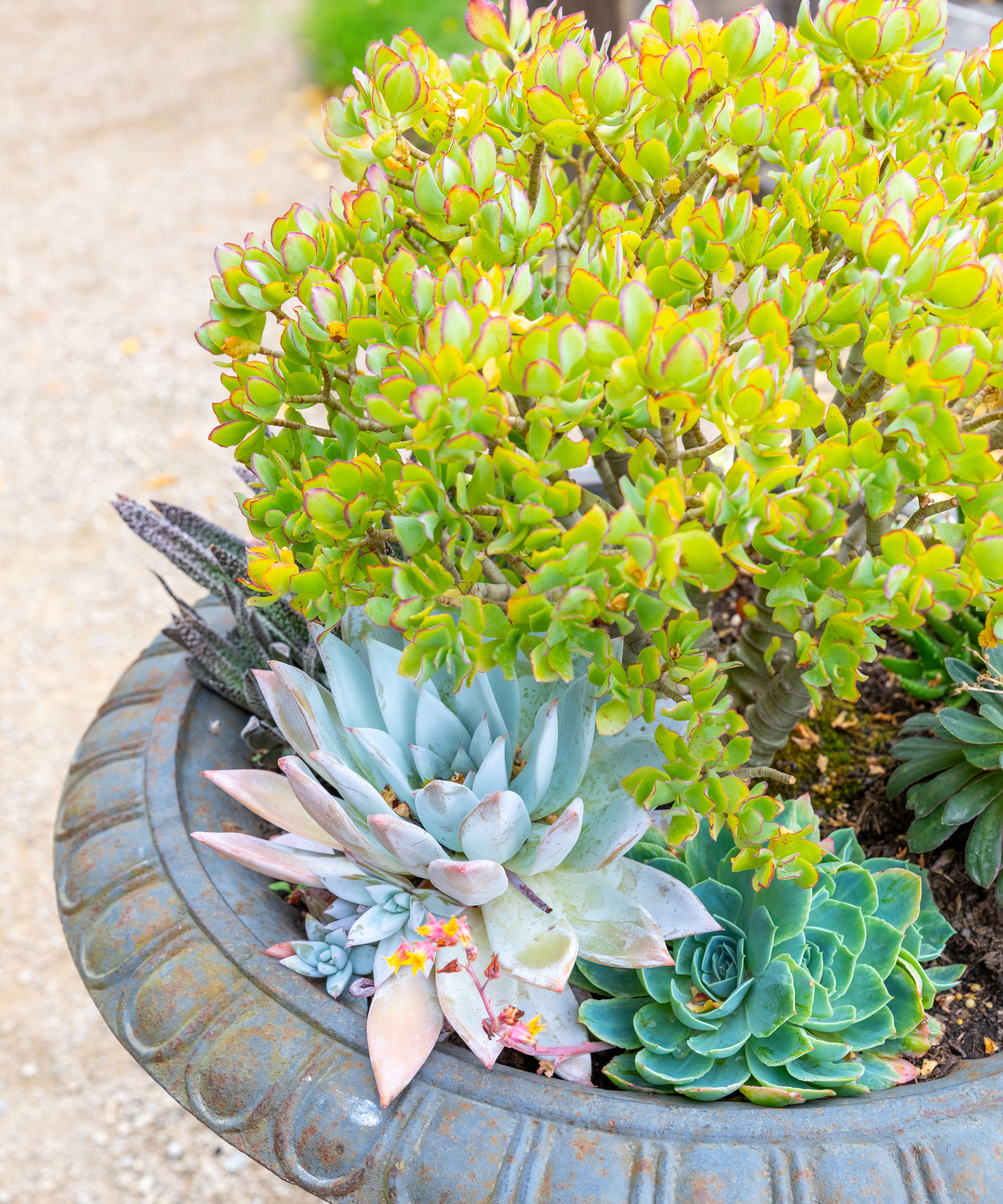
For low maintenance container gardening ideas, a selection of fully hardy succulents create an excellent year round effect in shallow containers.
Choose a variety of houseleeks – sempervivums – and low-growing sedums, opting for foliage in soft shades of green, mauve, pink and purple. Some succulents will also flower, adding a whole new season of interest to the planting.
Good drainage, a sunny spot and gritty compost are important for these plants, but they require minimal additional attention, and when you know how to care for succulents in winter, you can maintain them year-round.
‘For a successful planting, start by placing crocks over the container's drainage hole. We prefer to use crocks rather than gravel as gravel can become quickly clogged with repeated watering,’ advises Jim Keeling of Whichford Pottery.
6. Design a container herb garden

Some of the easiest types of plants to experiment with in pots are herbs. If you only have a tiny garden or balcony, plant two or three herbs that you use in your kitchen in a herb planter. Choose herbs that you love to eat and plant these in pretty pots that will accentuate them.
Growing cilantro, or coriander, basil and parsley in smaller pots works well, and you can harvest them until you have used them up. Shrubby herbs, such as rosemary and sage will need a larger planter because they will grow bigger and live for many years.
6. Create a 'painterly' effect with containers
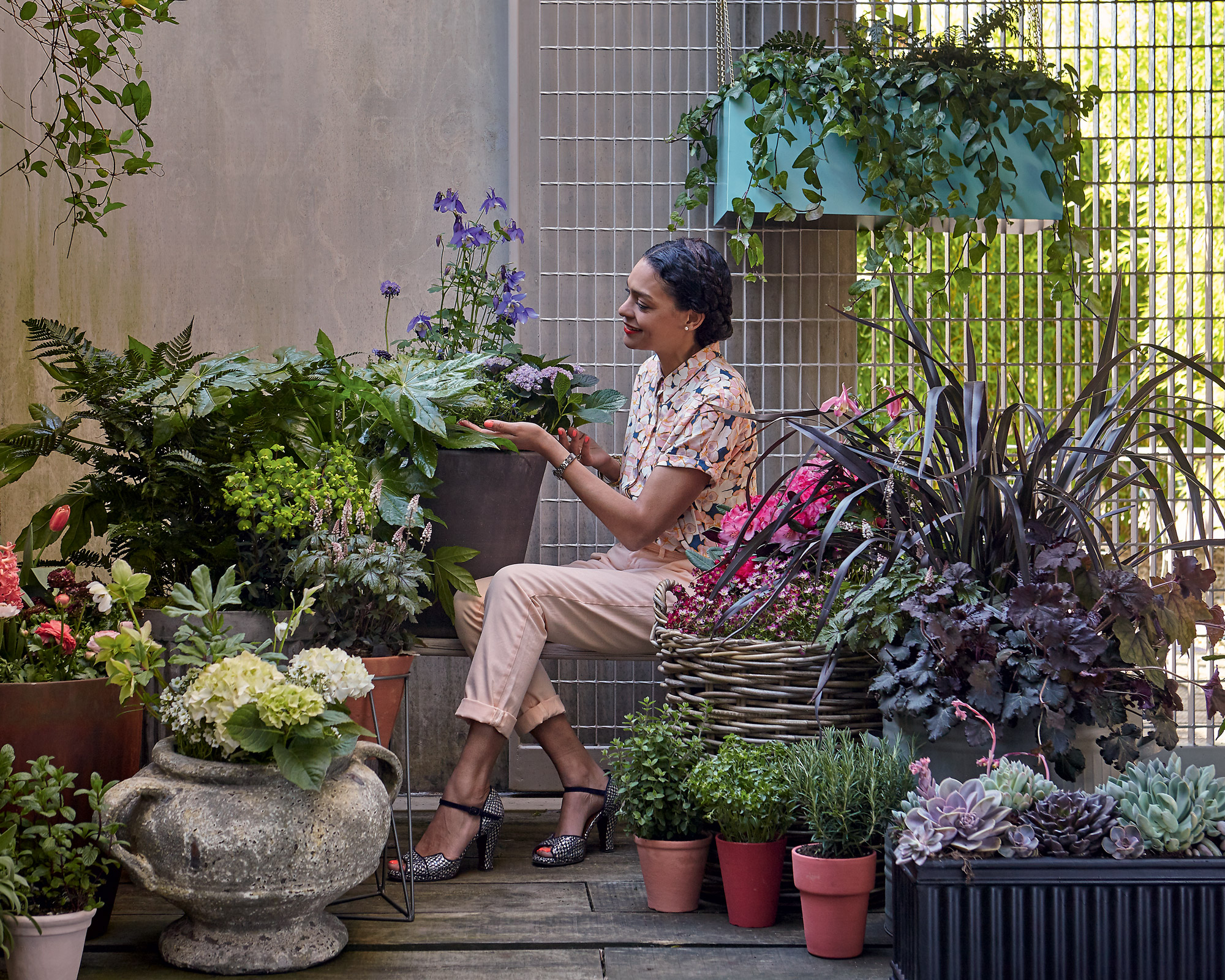
'You need order to hold container gardening ideas together, but I like a painterly element, too,' explains Isabelle Palmer.
'There are a lot of similarities between gardening and art as both are about creating a picture. I’ve always loved painting and color is so important to me. How I express it now is in the garden,' she adds.
Consider both the flowers and container colors when creating a painterly look.
7. Pot plants for pollinators
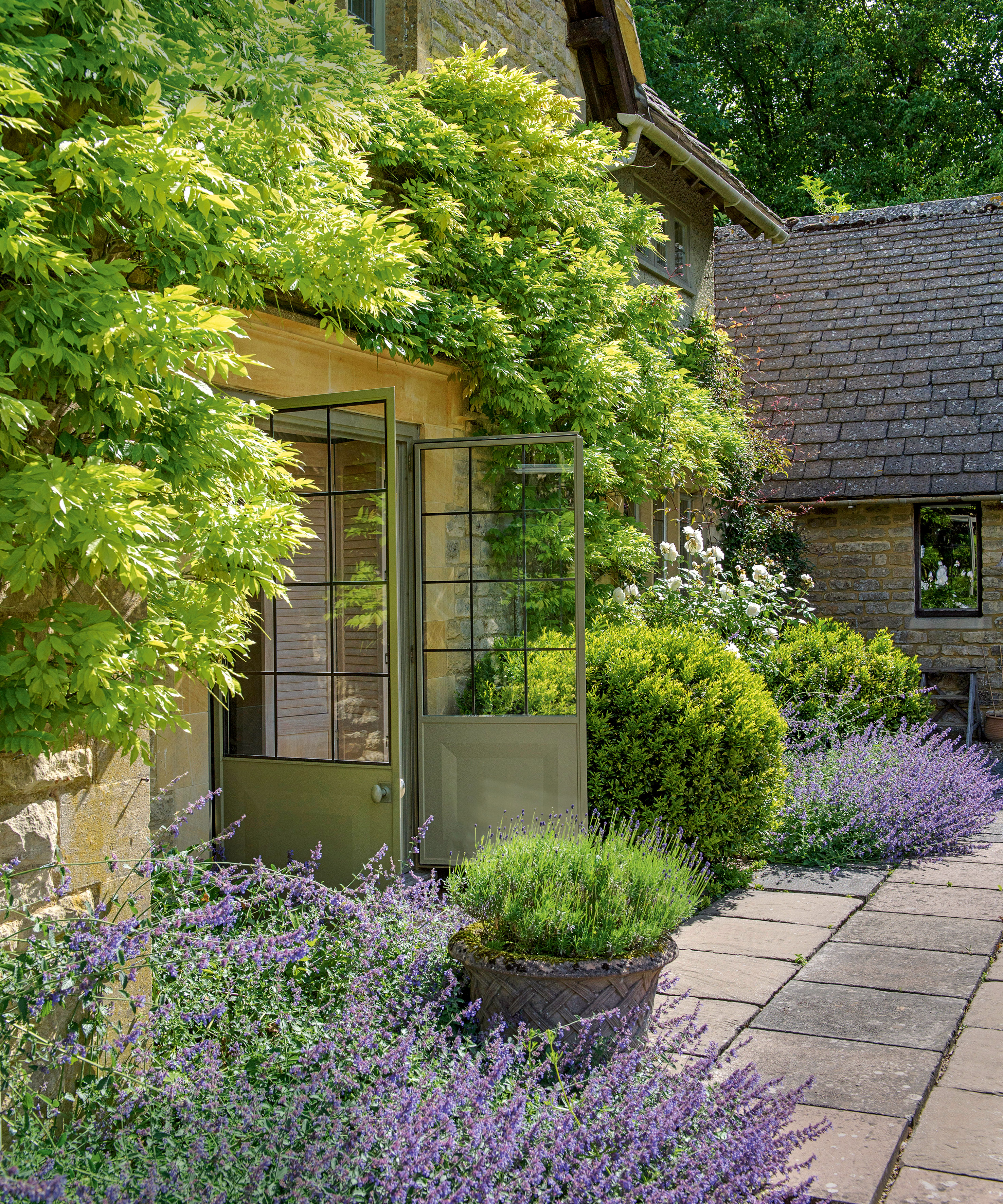
Supporting crucial pollinators, such as bees, is so important, and a few pots filled with flowers that attract bees or butterflies can make a difference.
Choose nectar rich plants that will also look good in your display. In their native land, fuchsias are pollinated by hummingbirds and have rich nectar resources to attract them.
Plant fuchsias in pots and containers for the longer-tongued Bumblebees that are attracted to these summer beauties. Other nectar rich flowers include borage, echium, lavender and echinacea, which can all be grown in containers.
8. Use container gardening ideas to inspire children
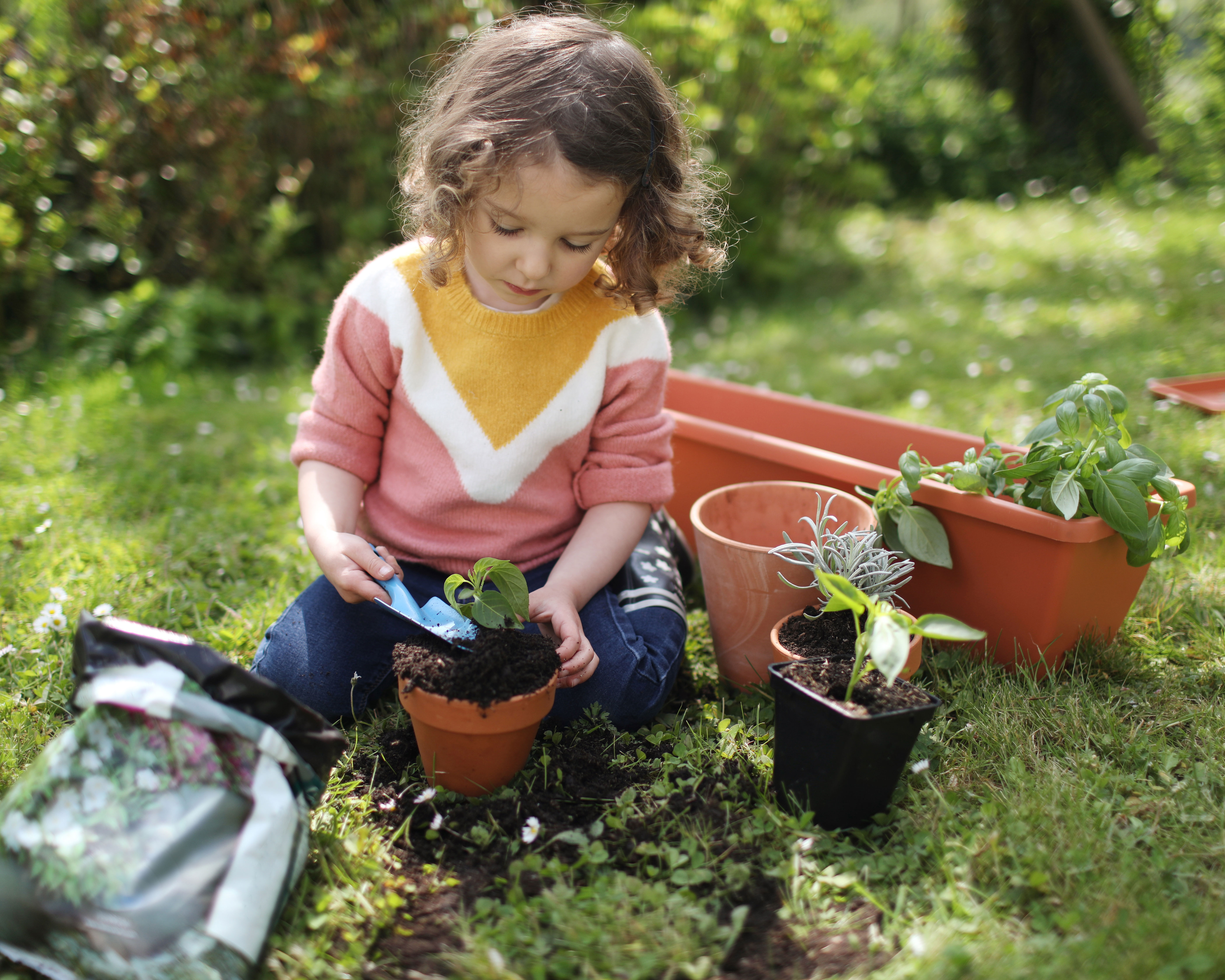
Use container gardening ideas of simple potting projects to inspire children to enjoy gardening.
'My family have been avid gardeners for generations, so the seed was sown at a young age and I vividly remember my first taste of planting was a strawberry plant,' explains Isabelle Palmer.
'In keeping with the family tradition, I also got my two-year-old her first strawberry plant last summer and she was still talking about it weeks after it had stopped fruiting.'
9. Be flexible with changeable seasonal displays

Flexibility is one of the key benefits of container gardening ideas – the fact you can move pots and planters around to highlight plants at their peak.
By planting a variety of pots with stunning, seasonal flowers, such as tulips, cannas, dahlias, lilies, or other summer beauties, you can bring them on until they are perfect and then swap them into the display when the previous planters start to flag.
This is a useful trick if you want your garden to constantly look dramatic throughout the seasons.
10. Add drama with potted topiary
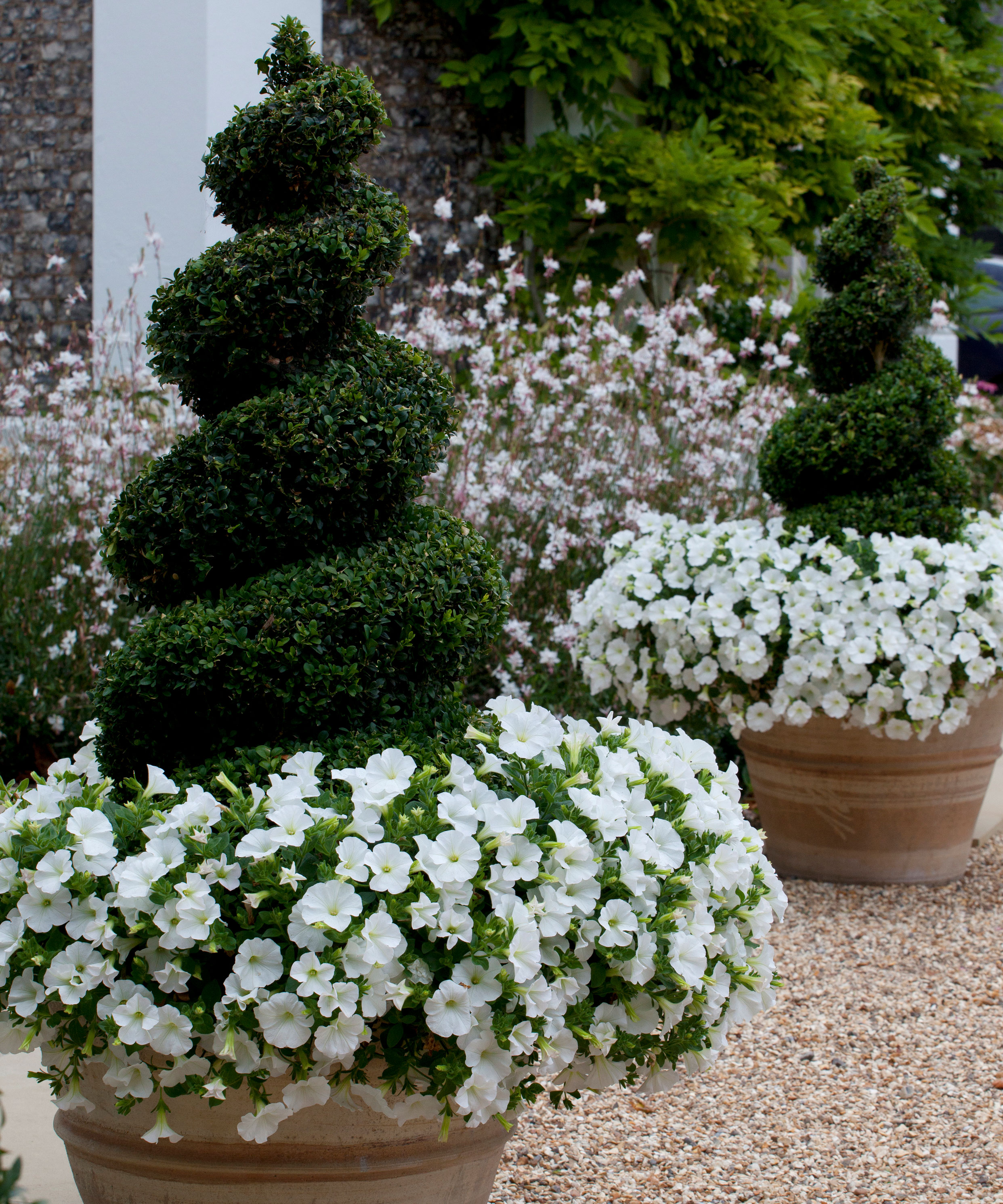
Container gardening ideas are not just about flowers. Foliage plants and evergreens can create fabulous displays, too.
An elegant piece of topiary can become almost statuesque in the garden creating a dramatic focal point. You can use a pair of topiary sculptures to accentuate a doorway, or several potted topiary balls to delineate a staircase or along the edge of a path or garden rill, creating a classic, dramatic effect.
11. Think vertically

Use walls, fences and other vertical structures to support pots and planters.
Along with hanging baskets and wall planters, but there are many other vertical planting or living wall ideas – products that allow you to virtually clothe a wall or a garden screen with plants.
Support pots on rings, brackets or even display them over the a balcony or terrace.
12. Accommodate container plants' special needs
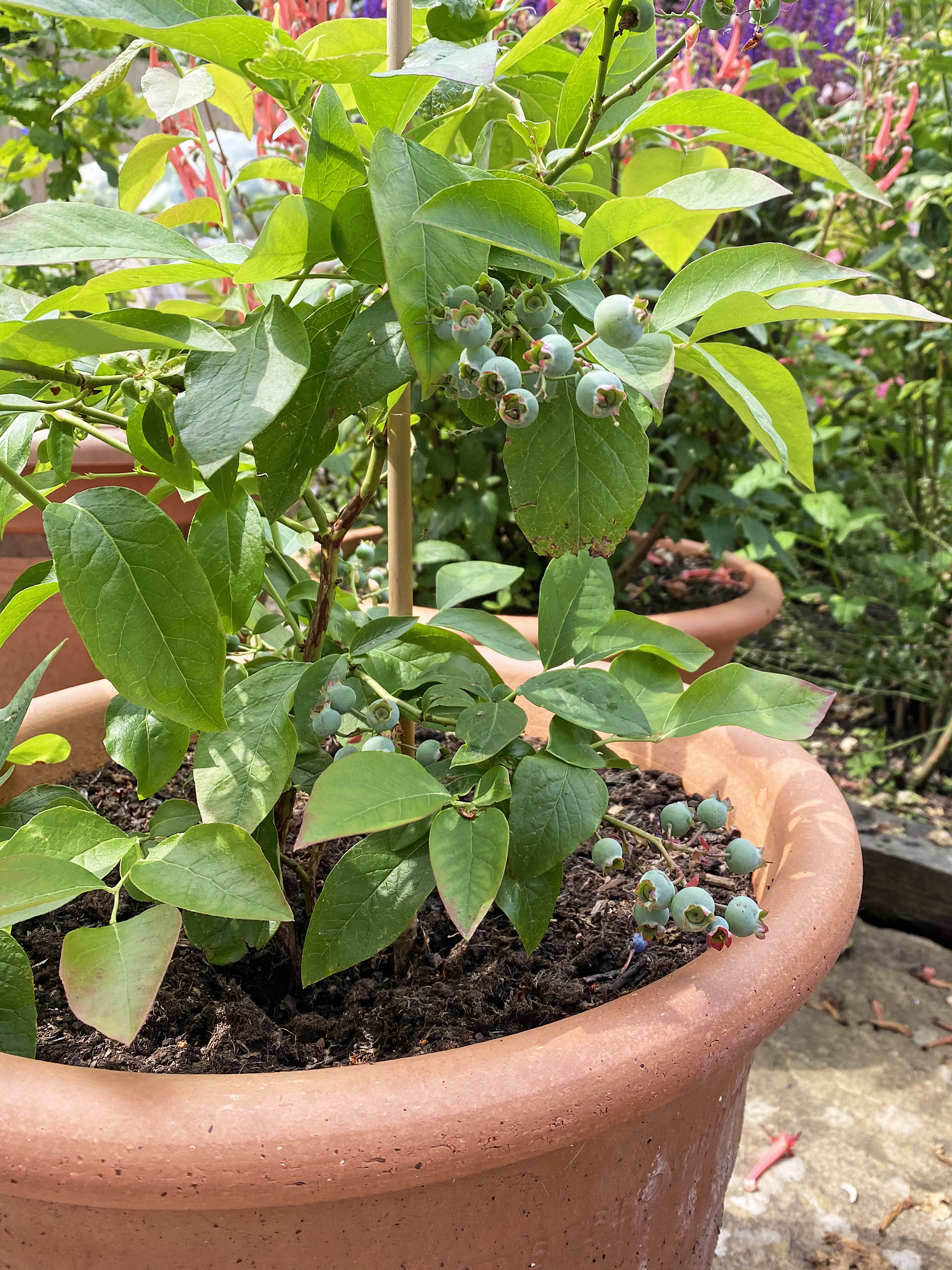
Some plants have specific requirements in terms of their soil and growing conditions. The beauty of container gardening is you can alleviate all those associated worries.
For example, to get the very best from growing blueberries, they need an acidic soil or compost. You can buy ericaceous compost for acid loving plants and then grow them in containers. Blueberries grow very well in planters and if you choose to grow three blueberry plants you will get better pollination and a bigger harvest.
What plants are good for container gardening?
Almost any plants are good for container gardening ideas. The secret is to choose the right size pots for your plant. For example, trees and shrubs need more room for their root growth and larger planters are ideal. It’s a great chance to grow plants that might not enjoy your garden soil conditions because you can alter the compost that you use in each planter.
There is no set recipe of what you can include in your containers. The world of plants is at your disposal, so indulge your inner flower power and plant for drama, scent and vibrancy. If you prefer the softer look, then the tapestry effect is a good aim. Or if you want to boost your summer menus, then plant herbs, salads and even tumbling tomatoes and chilli peppers for vegetable garden container ideas.
How do you layout a container garden?
Use pots and planters to lift a corner or create a focal point to draw your eye towards them and away from a tired area of the yard.
You can place specimen planters as if they were statues or garden ornaments, making them into a feature, or cluster several pots together to create an interesting display. When you have several planters, try to use similar materials or have a color theme. Place the largest planter in the middle and then arrange the other pots and containers around it.
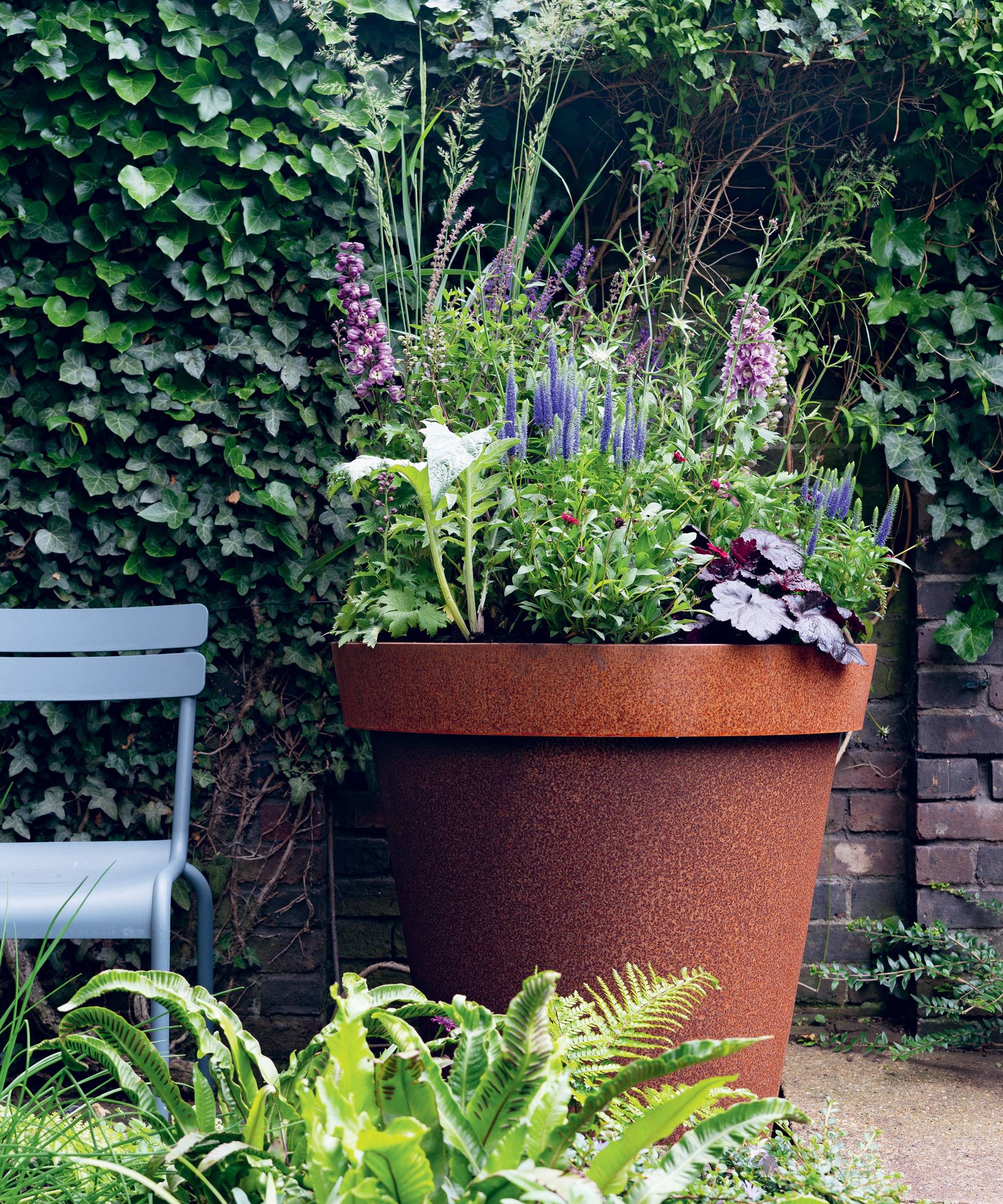
How do you maintain container plants?
One of the essential tasks you need to attend to diligently with container gardening is watering. Pots and containers can dry out quickly, especially in hot and windy weather.
You could choose self-watering pots that hold a reservoir of water to keep the compost moist for longer, or install an automatic watering system. Watering by hand with a watering can will help you observe your plants close up and notice when they need more water. In drought conditions, move your planters out of the sun and group them together to make watering easier.
Container plants are dependent on the food in the compost you have planted them in and need additional food to keep them flowering for longer.
'Compost contains starter nutrients to help your plants settle into their pots during the first four weeks. From then on, for best results, you should feed your plants regularly. Shrubs and climbers need feeding once a fortnight during the growing season, but nutrient hungry plants, such as summer bedding, tomatoes and strawberries should be fed twice a week. High potash feeds are best for flowers, fruits and vegetables,' explains gardening expert Richard Jackson.
Sign up to the Homes & Gardens newsletter
Design expertise in your inbox – from inspiring decorating ideas and beautiful celebrity homes to practical gardening advice and shopping round-ups.
-
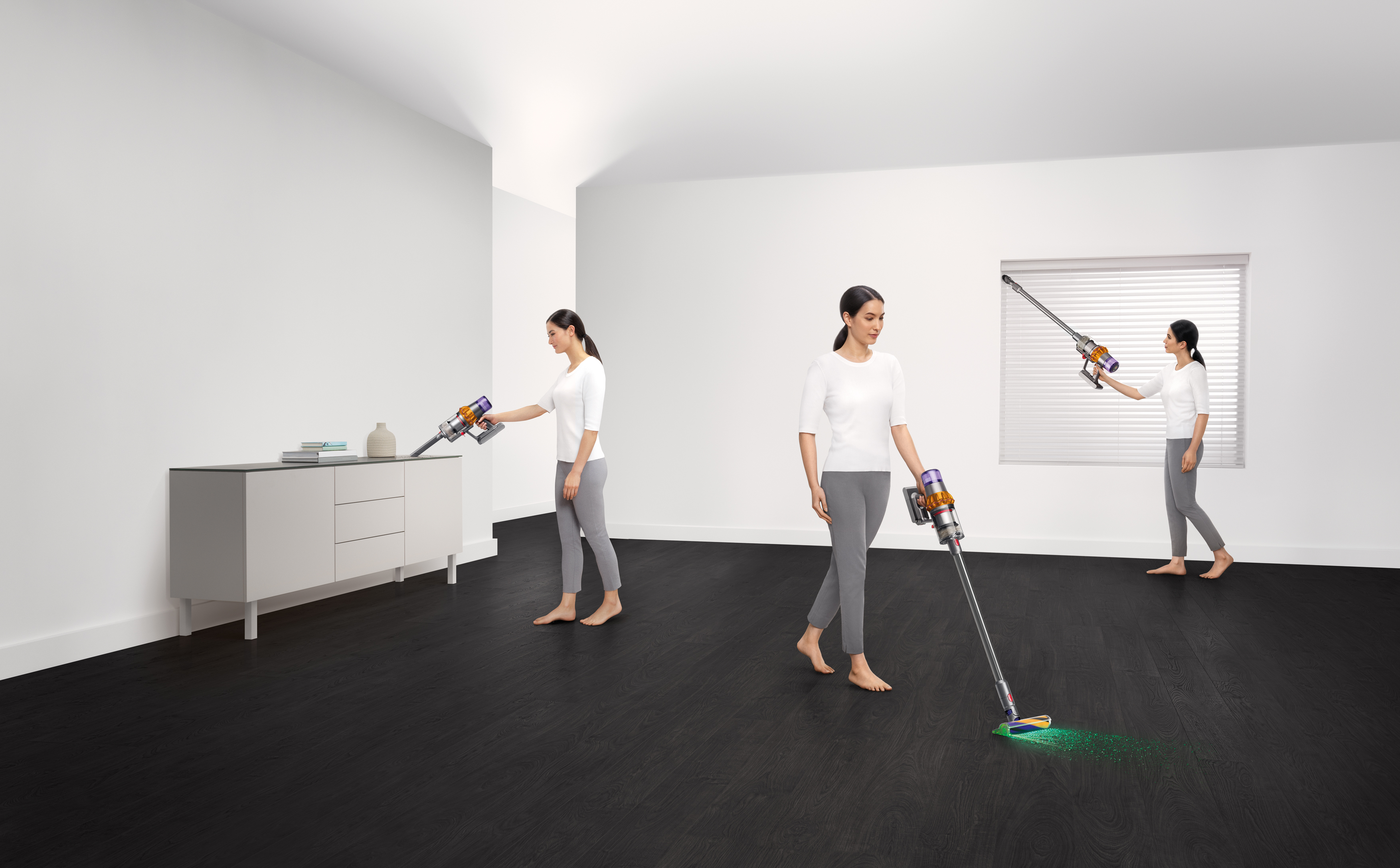 Dyson V15 Detect vs Dyson V12 Detect Slim – which is right for your home?
Dyson V15 Detect vs Dyson V12 Detect Slim – which is right for your home?I've spent more than 200 hours testing vacuum cleaners and these two cordless Dysons are my personal favorites
By Dan Fauzi
-
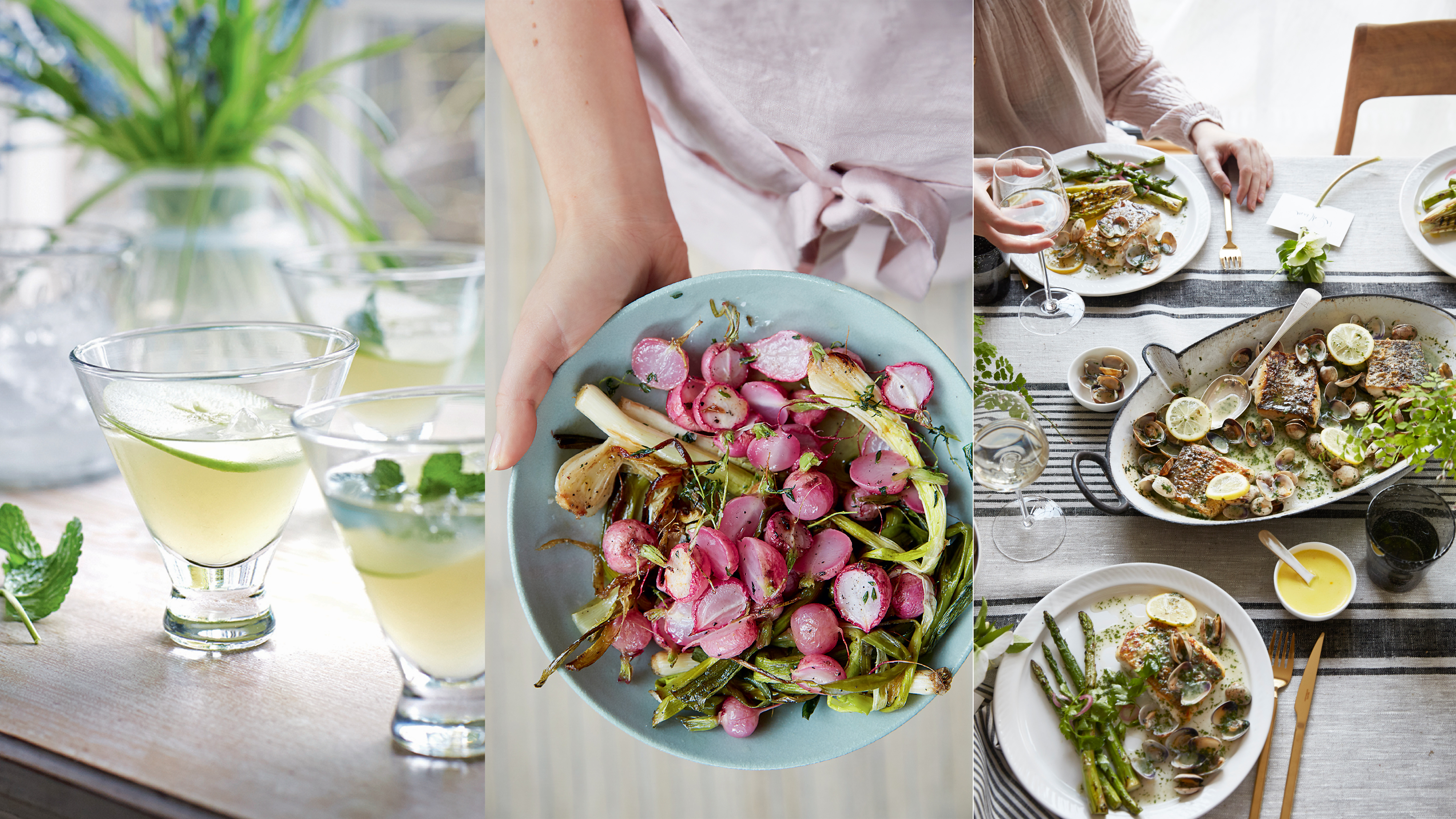 Your perfect Easter menu: our favorite Easter recipes for effortless entertaining
Your perfect Easter menu: our favorite Easter recipes for effortless entertainingFresh flavors, easy dishes, and crowd-pleasing ideas – our selection of Easter recipes make for a relaxed yet elevated spring celebration
By Alice Hart